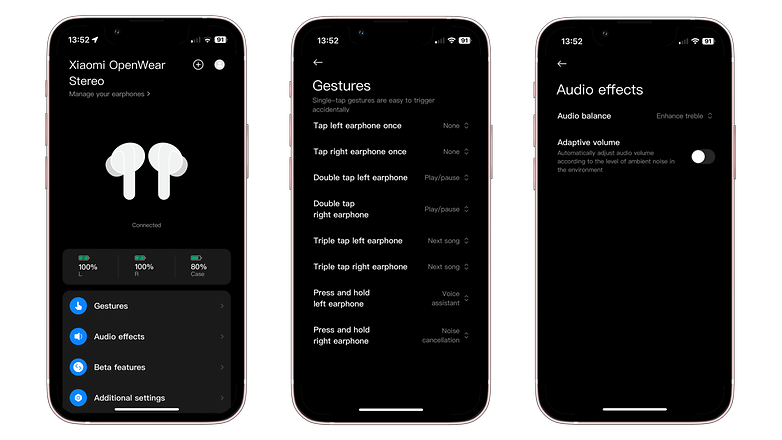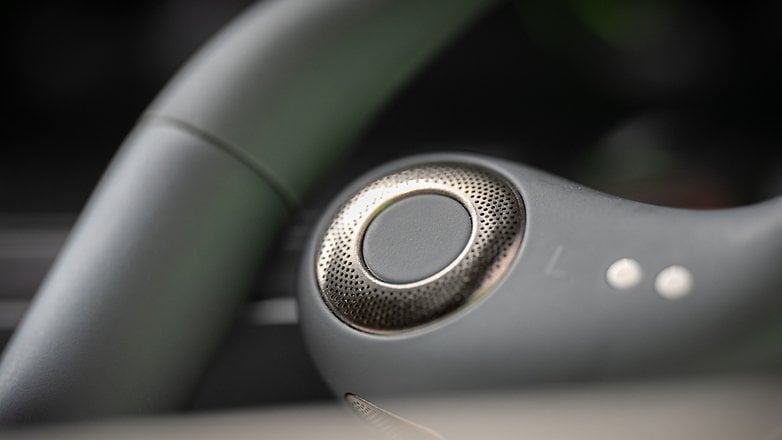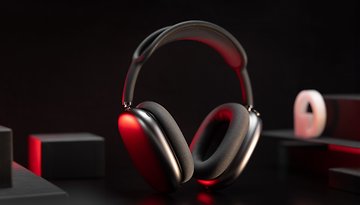Open Ear Headphones with ANC?! Xiaomi's OpenWear Stereo Review


Consumer electronics manufacturers keep selling open ear headphones which Xiaomi now dubs "OpenWear Stereo", charging approximately $129 a pop and equipping them with...ANC?! They cling to the top of your ears and sit a few millimeters in front of your ear canal. Do they sound impressive and does the ANC actually work? nextpit reviews the Xiaomi Openwear Stereo!
Good
- High wearing comfort
- Clear music playback in quiet environments
- Very long battery life
- LHDC available as Hi-Res codec
Bad
- Bass is barely noticeable
- No wireless charging support
- ANC is hardly effective
- Some features are Xiaomi-exclusive

In a nutshell
Xiaomi is the latest manufacturer to jump aboard the open ear headphones bandwagon, and once again, it doesn't quite manage to come close to delivering the best-in-class model. The OpenWear Stereo is impressive in terms of design, wearing comfort, battery life, and wide range of functions when used in tandem with Xiaomi smartphones.
Audio playback quality in louder environments was not satisfactory despite the presence of ANC. Most people will therefore be better served with classic earbuds simply because of physics: Better to have a transparency mode with wind noise than open ear headphones without any kind of active or passive noise suppression at all.
If you still want to try the OpenWear Stereo out, you can already find the new headphones on via various online retailers, although it is not officially available in the US. You will have to budget for approximately $129 a pair if you're interested in picking it up.
Design & build quality
When you unbox the OpenWear Stereo from Xiaomi, the first thing you notice is the large charging case. The reason for this? The design. They are attached to the top of the ears via a bracket and hang in a C-shape in front of the ear canal. Tipping the scales at 9.6g per earbud, the weight is extremely light. Together in the charging case, the headphones weigh around 70g. You will also find dust and water protection based on the IP54 rating!
Pros:
- Very comfortable and secure fit when worn.
- Water and dust protection.
- Reportedly tested and passed 5,000 bends thanks to the nickel-titanium alloy used.
Cons:
- Headphone size is not customizable.
- Touch operation can be prone to accidental input.
- Mirrored elements on the headphones are extremely susceptible to fingerprints.
The attempt to design open ear headphones to let ambient noise through while listening to music is always a curious animal. The Xiaomi OpenWear Stereo proves this to be somewhat true. At first glance, the headphones look like sports headphones that are equipped with retaining straps for a better grip. However, when you wear the OpenWear Stereo, one thing becomes apparent:
The two earbuds only cling tightly over the ears and do not have silicone tips or fins that you place in your ear. Rather, the design of the headphones is intended to place the two speaker membranes roughly in front of the ear canal, allowing you to hear audio content being played.
As you can see from the photo of my left ear, this worked surprisingly well, as the chrome-colored speaker elements are tucked in at the back of the ear once they're in place. I guess most ears are compatible with the headphones or the other way around!

To make this design as robust as possible, Xiaomi relies on an alloy of nickel and titanium in the production of the headphones should be able to withstand a whopping 5,000 bends without any issues. In everyday life, however, I have to say that you don't actually bend the headphones very often when using them in a conventional manner. I usually adjust them on my ear and the earbuds have retained their shape.
Despite this unusual design, the OpenWear Stereo remained in place on my ears. When shaking my head or even jogging, the earbuds stayed where they are. After getting used to them, I even wore them when doing the dishes without any fear of the earbuds falling into the sink. However, if they ever fell prey to clumsiness and the law of gravity, that wouldn't be a problem either. Xiaomi has rated it at IP54 for dust and water protection.

What I liked less is the touch control gestures. Once again, these are prone to accidental activation and can trigger incorrectly if they were to come into contact with water. The operating method you prefer for headphones is, of course, subjective. Overall, there's not much to complain about in terms of its design.
App & functions
I will be brief here: There is a companion app called "Xiaomi Earbuds", which allows you to control the earbuds or adjust the sound, for instance. However, you won't find a full-fledged equalizer here. However, the dual pairing function and a search function for the headphones could come in useful.
Pros:
- Well-designed companion app.
- Controls are customizable.
- Dual pairing, sound customization, and remote camera control function.
Cons:
- No actual equalizer available.
- No functions such as wear detection or something similar.
For a pair of earbuds in 2024, the Xiaomi OpenWear Stereo offers a mediocre range of functions. The design of the companion app and battery life display are impressive. However, without wear detection, 3D audio functions, or head tracking and missing out on a "real" equalizer, the $129 headphones fall behind many competitors.
Instead of an equalizer, Xiaomi allows you to switch to treble emphasis or voice emphasis in the headphone mix in addition to normal mode. I admittedly like the treble emphasis and think it is the best, but more on that in the next segment.

Having dual pair capability, a dual headphone function that can play two pairs of headphones with just one smartphone, and customization options for gesture control are also very useful. Another clever feature is how the headphones can trigger the camera of Xiaomi smartphones if required.
Unfortunately, the remote camera control is not only Android-exclusive, but only available within Xiaomi's ecosystem. As there's a lot to write about in terms of design and sound, but I'll keep this brief. Do leave your questions in the comments!
Sound and ANC
As open ear headphones, the Xiaomi OpenWear Stereo offers an unusual audio experience. This is because by design, the headphones allow ambient noise to reach the ear without any transparency mode. Not only that, the Openwear Stereo is not a pair of bone-conduction headphones. As already mentioned, the headphones hold two 10 mm drivers with a frequency response of 20 Hz - 20 kHz in front of your ear. It also offers...ANC?!
Pros:
- Podcasts and calls are really easy to listen to.
- Good volume levels despite its distance from the ear.
- Surprisingly low amount of audio bleed.
Cons:
- Volume quickly becomes annoying when combined with external noise
- Bass is almost completely absent from the music
- ANC barely noticeable and still prone to errors as a beta feature
Over the last few years, I was able to try out several open ear headphone systems, be they bone-conduction headphones like the Haylou PurFree BC01 or "headphones-sunglass hybrids" like the Fauna Audio Glasses (review). In a way, the OpenWear Stereo is a mixture of both systems. They wear in a similar way to the Haylou headphones, but outputs audio signals via conventional drivers like the Fauna Audio Glasses.
This makes the listening experience feel a bit like taking conventional over-ear headphones a few centimeters away from your ear to talk to a friend. The music sounds a little farther but remains intelligible for the most part. However, ambient noise is transmitted in an obvious manner and this is an advantage compared to in-ear headphones with a transparency function.

You don't have to worry about interference or wind noise with the OpenWear Stereo. This is a very positive effect, especially when you are up and about in road traffic, such as when riding a bicycle or e-scooter (comparison). While you can suppress ambient noise with in-ear headphones, this function is largely absent with the new Xiaomi headphones. Although Xiaomi does offer an ANC function here, Active Noise Cancellation works via anti-noise and therefore, no closed headphones are required, making the function not really effective.
If you were to pay attention to fan noise, for instance, when activating ANC, it is reduced by around 10 percent. That's not negligible, but it's nowhere near as effective as conventional ANC. As the function is still in beta, there is also a lot of background noise which can be quite irritating.
Back to music playback. As with other open headphone reviews, low tones in particular fall by the wayside with the OpenWear Stereo. The fact that frequency response only begins at 20 Hz is not really the problem. Rather, bass is simply not transmitted as well over the air. Headphones are very practical if you like to pay attention to lyrics when listening to music or want to use the headphones primarily for podcasts. The Xiaomi OpenWear Stereo transmits voices surprisingly well.

The fact that Xiaomi certified the headphones for HiRes audio via the LHDC codec is certainly interesting from a marketing perspective. However, since the headphones are only suitable for active music enjoyment to a limited extent, I found this feature to be rather negligible. I tried the high-quality codec with a compatible device but couldn't hear any real difference.
What's rather surprising is this: The alleged "audio bleed", i.e. music leaked outside, occurs very little at medium to high volume. Only at maximum volume can I imagine the person sitting next to you on the train being annoyed by the noise.
Last but not least, I noticed the headphones don't filter out ambient noise, you tend to turn the music level up very loud in noisy environments. In a noisy city, my ears started to ache a little because I was using the headphones too loudly for too long. You should pay attention to this!
Battery & charging
The large charging case of the OpenWear Stereo houses a 788 mAh battery, giving the headphones a total playback time of an impressive 38.5 hours. Standalone, the open ear headphones managed to achieve 7.5 hours of music playback. That's solid, but unfortunately, they are only charged by cable via USB C.
Pros:
- Overall good to very good battery life.
- Precise battery status display in the app.
Cons:
- No wireless charging supported.
- No quick charging supported.
The "battery and charging" category is quickly ticked off with the OpenWear Stereo. The headphones are supposed to be able to play music non-stop for 7.5 hours. After several hours of use, I think this figure is realistic. I also found it to be very practical that the app provides us with precise information about the remaining battery capacity percentage of each earpiece and the charging case.

The headphones can then be recharged up to five times via the large charging case. This results in a total runtime of 38.5 hours, and you don't even have to think about a charging cable when you're on vacation. However, if you do need to power the headphones, you should use a USB-C cable as wireless charging is not included in a device with an asking price of $129! It also misses out on quick charging, which is a shame!
Conclusion
I always find it difficult to draw a professional conclusion when comparing open ear headphones. The OpenWear Studio is technically impressive with LHDC compatibility, sporting an incredibly long battery life of up to 38.5 hours and high wearing comfort, which does not cause a feeling of pressure on or in the ears even after using it for several hours straight.

However, by opting for open headphones, you are also opting for a strong niche product. In my experience, it's more common to want to block out your surroundings when listening to music than to be aware of them. And while current in-ear headphones still offer a transparency mode for the latter, the Openwear Stereo cannot score points here despite the integrated ANC.
As open ear headphones, being what the OpenWear Studio is, the new Xiaomi device definitely impressed in the review. I rate it 4.5 stars. As a pair of modern headphones in 2024, however, they are less impressive, which is why I would have rewarded 3.5 stars. Putting both scores together, we end up with a 4 star rating in this nextpit review!














